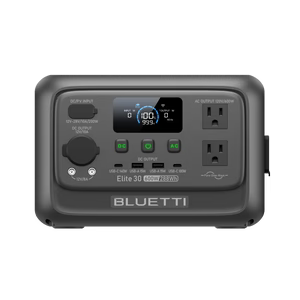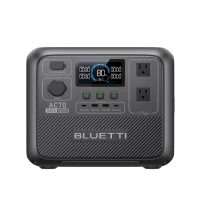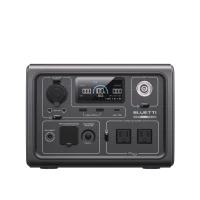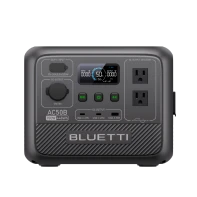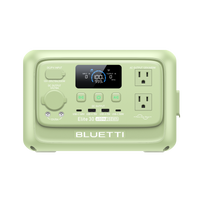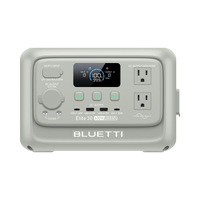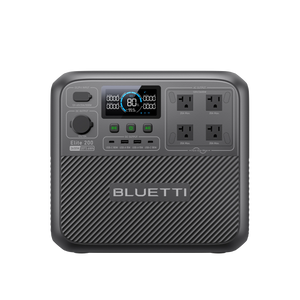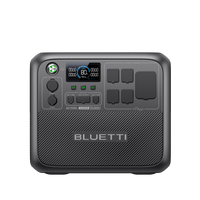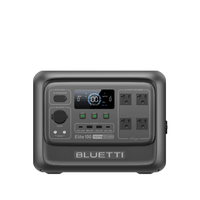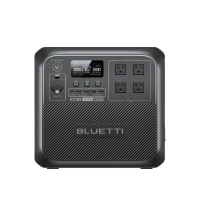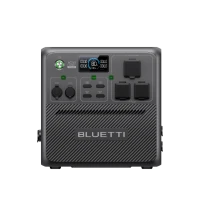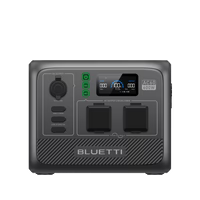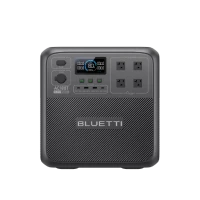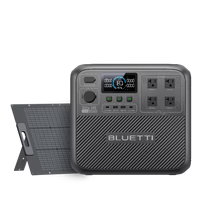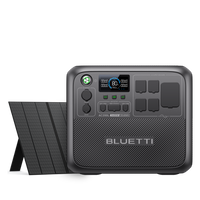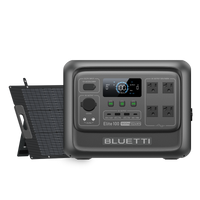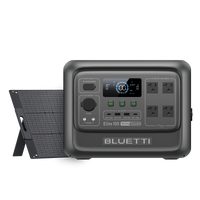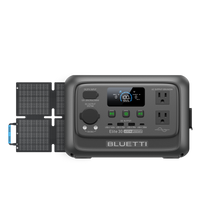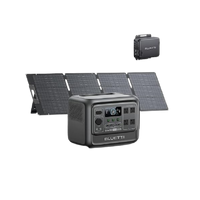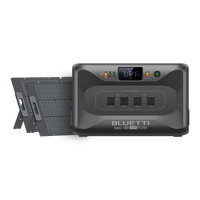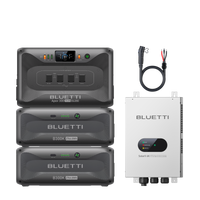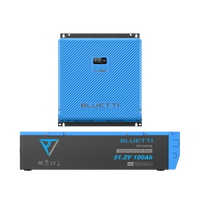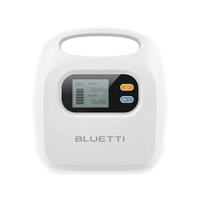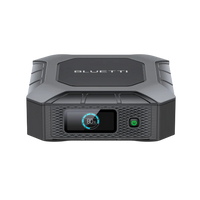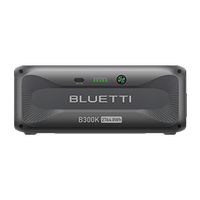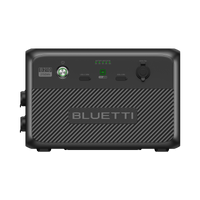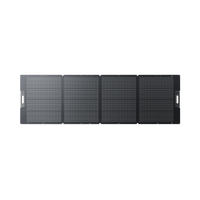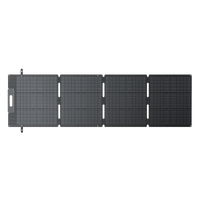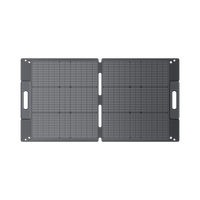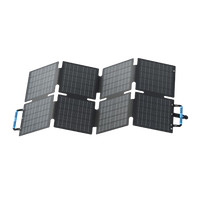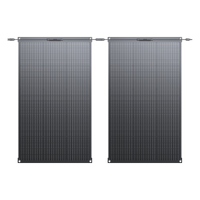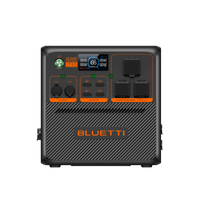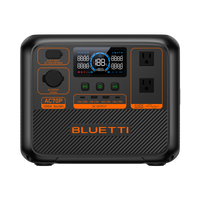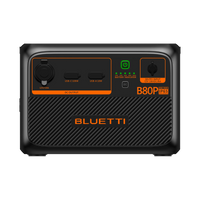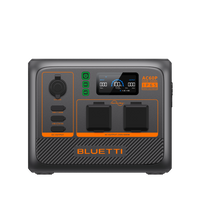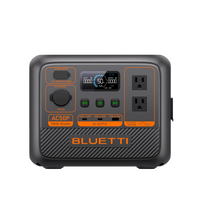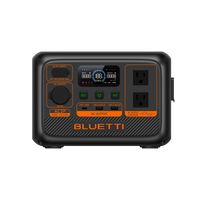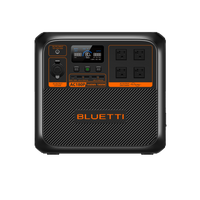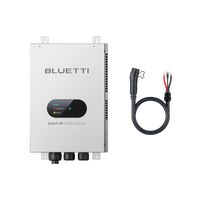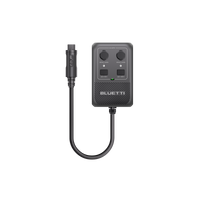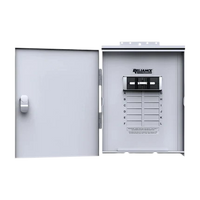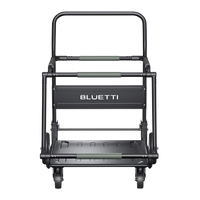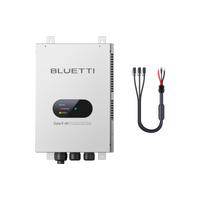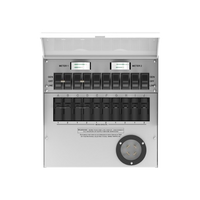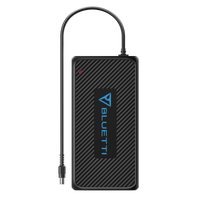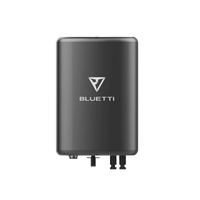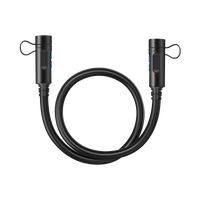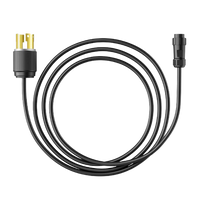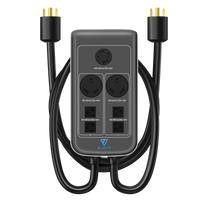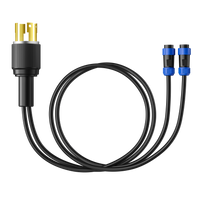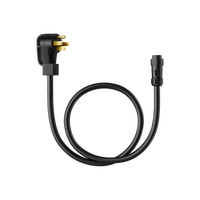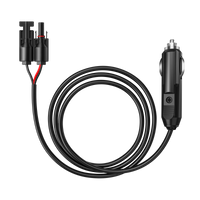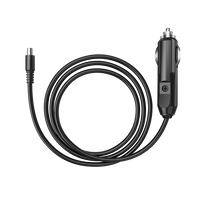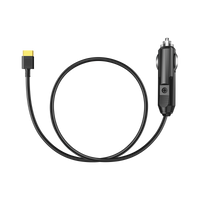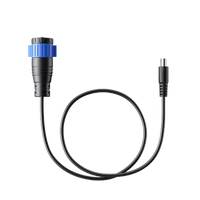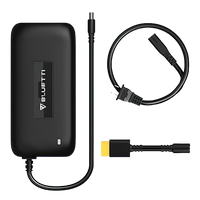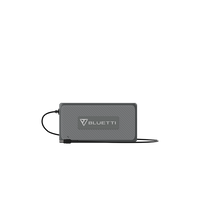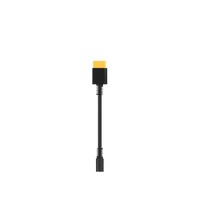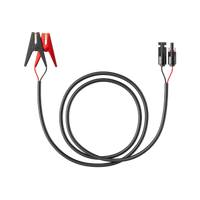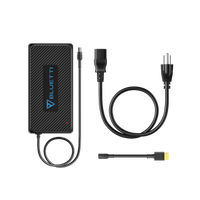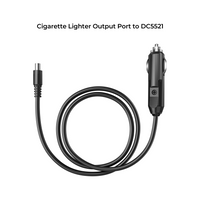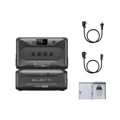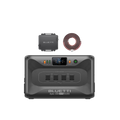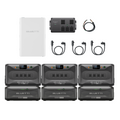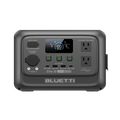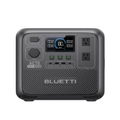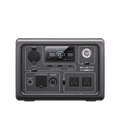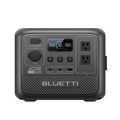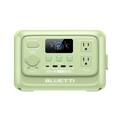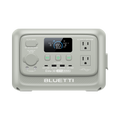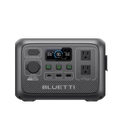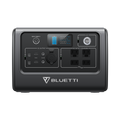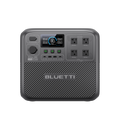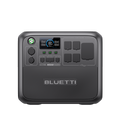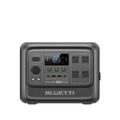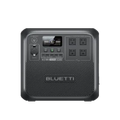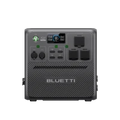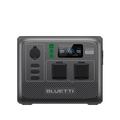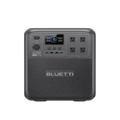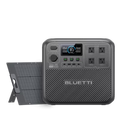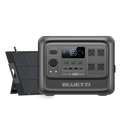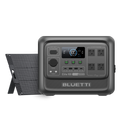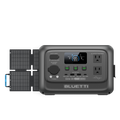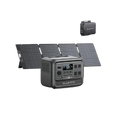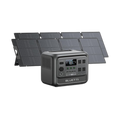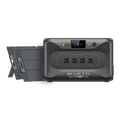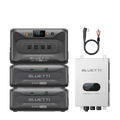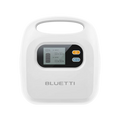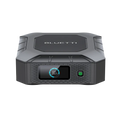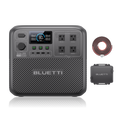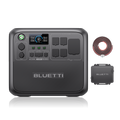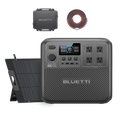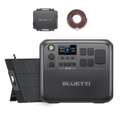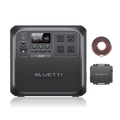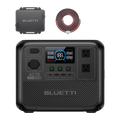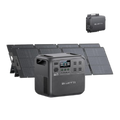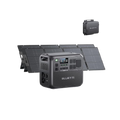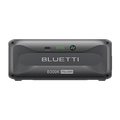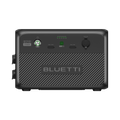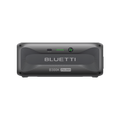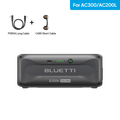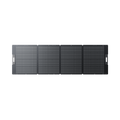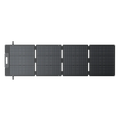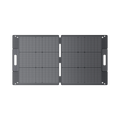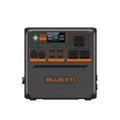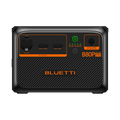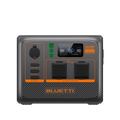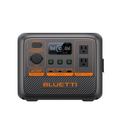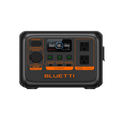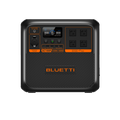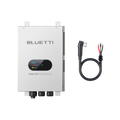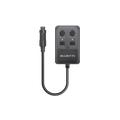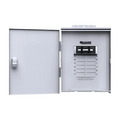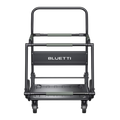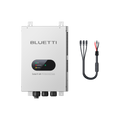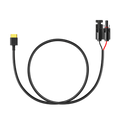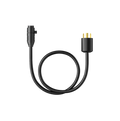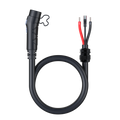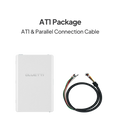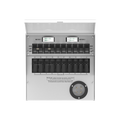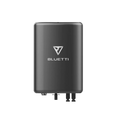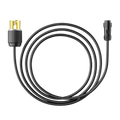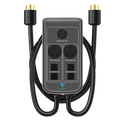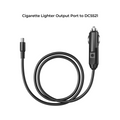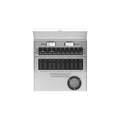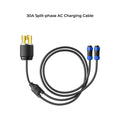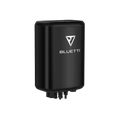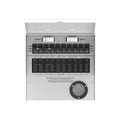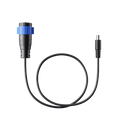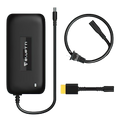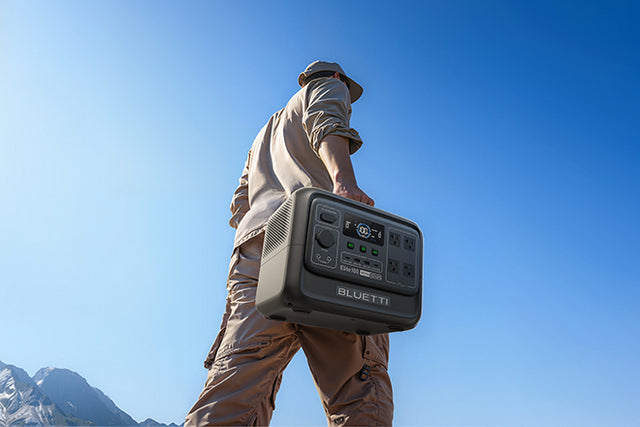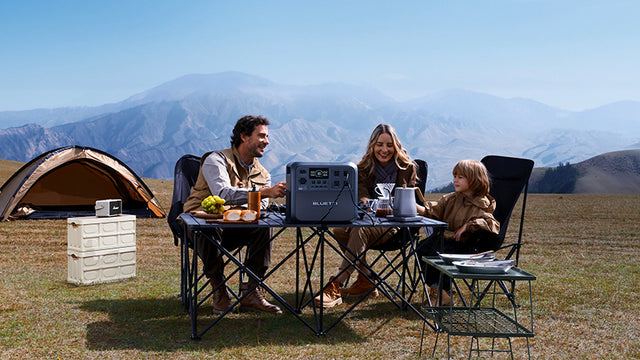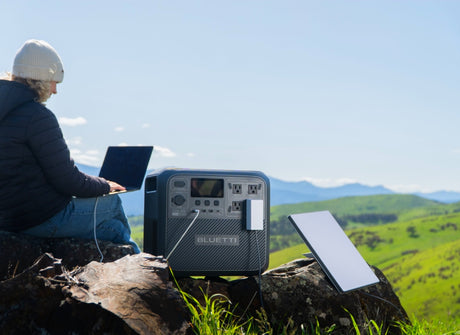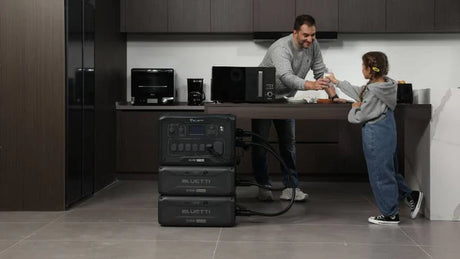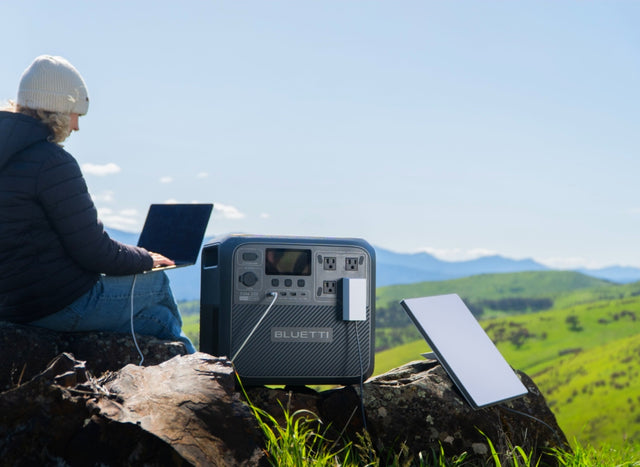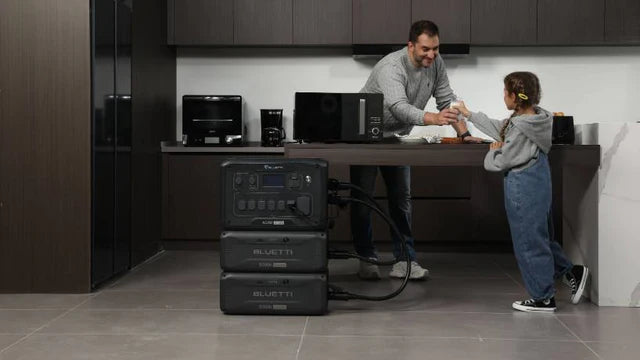Is your fridge the energy guzzler responsible for high bills? To get the actual picture, you must comprehend the amount of power consumed by your refrigerator. It will help to estimate energy bills and design adequate power backup so that you can better deal with outages. The power consumed by the fridge is variable. The brand box ratings are rated power ratings not the actual power that your fridge consumes at different times.
This blog defines everything from surge watts to the running watts. We will explore compressor cycles and their influence on the total power consumption. We will also assist you to calculate the actual watts of your fridge!
How Refrigerator Power Consumption Works
The amount of power that is used by the refrigerator is quite dynamic. The appliance may seem simple, but there are many things that come into play to keep your beer cans chilled. Refrigerator power consumption works the following way:

Running Watts and Starting Watts
A fridge consumes different amounts of power, between starting and running. It takes several seconds to kick start when you plug in and uses a lot of power (2-3 times more than a running phase). The maximum watts that is needed to start the refrigerator is known as starting or surge watts.
After starting, the power consumed by the fridge goes down to the usual rated watts. Running watts is the constant amount of power needed to operate a regular refrigerator. When planning a power backup, you should consider running watts and surge watts. If the backup is not able to support surge watts (this could be 1200 watts or higher) then the fridge will not operate.
Factors That Affect Fridge Power Use
The electricity consumption of the refrigerators depends on several factors. All the models vary in specification and power demands. The essential factors are as follows:
Size and Capacity
It’s quite clear that a big fridge will consume more electricity than a smaller one. The size of the fridge is in cu. Ft. and it could be between 4 cu. Ft. and 25 cu. Ft. or more. A four cu. Ft. fridge uses approximately 100 to 200 watts whereas a full size, two-door, twenty-five cu. Ft. fridge uses 800 watts.
Age and Condition

The older models of the refrigerator do not utilize energy efficiently and waste a lot of power. It is due to the old insulation and overuse of heavy compressors. The vast majority of the new fridges are optimised to use minimum electricity, and be efficient.
Energy Efficient Models
Energy star rated refrigerators use less energy. They are improved in insulation and employ inverter compressors (they operate on direct current) with an efficient fan and motor system. The majority of refrigerators today are energy efficient due to the obsolete nature of the old technology.
Ambient Temperature
Where do you keep your fridge? Power consumption will be more in case it is in a hot region. Other than climatic conditions, power usage is also affected by the temperature around the fridge space. This is because the fridge will continue consuming power to ensure that temperatures are lower.
Door Opening Frequency
When you open the door of the refrigerator, the inside temperature lowers immediately. In order to maintain the temperature, the fridge uses an excessive amount of power. Do not keep the door of the refrigerator open. Make sure you open the door at minimum times.
Understanding Compressor Cycles
The cooling mechanism of the fridge does not go on all the time. It operates in cycles to cool and bring the interior temperature to the required level. The system decreases the energy consumption and permits achieving the needed temperature much more productively.
The power usage of the refrigerator to your surprise is not the watts used. It is the hours of working multiplied with running watts (running watts x compressor runtime).
Average Fridge Wattage by Type & How to Measure It
Let's explore different fridge types and their average power consumption in watts. But first, we will help you calculate your fridge's power consumption.
How to Measure Your Fridge’s Usage
Do you recall the power formula from your science class? Power is the product of volts and the amperes. Rated watts can be found in your fridge manual and in case the information is not there you can make use of the formula.

Look at the sticker or a steel plate imprinted on the back of your fridge. Most of the time it bears electrical ratings and other supplementary information. You will see both current ratings and the voltage ratings. Feed in the values in the formula to obtain the rated watts.
To take an illustration, say a fridge has a consumption of 1.5A and 120V, then power usage will be 1.5A*120V = 180W. Alternatively, you can measure power consumption using the energy monitors as they provide energy consumption in real-time. Refrigerators that have energy star certifications are accompanied with an energy guide, which provides average yearly power usage. You can also take the number and divide it by 365 to get daily usage.
Average Fridge Wattage
Here's a list of different refrigerator types and their power consumption in watts. Find your fridge type to check the power ratings:
|
Fridge Type |
Running Watts |
Surge Watts |
Best For / Features |
|
Mini Fridge (4 cu. ft.) |
50–100 W |
200–400 W |
Dorms, offices, RVs, vanlife |
|
Top-Freezer (14–20 cu. ft.) |
100–250 W |
500–800 W |
Most common in homes |
|
Side-by-Side / French Door |
150–300 W |
800–1200 W |
Large families, ice makers, and smart features |
|
Smart / Commercial Fridge |
300–700 W |
1200–1800 W |
Restaurants, smart homes, dual compressors, etc. |
How to Power a Fridge During Outages or Off-Grid
The power outages may occur at any time. They can be caused by weather conditions, faults, and routine maintenance. What do you do when the electricity shuts down for days? It puts the daily routine on hold but you can resume to normal with the right power backup through solar generators.
There should be a power backup to use vital appliances like a fridge, CPAP machines, etc. You should have a powerful plan to create an effective backup and reduce grid reliance.
Choosing a Generator or Battery Backup
The first step is to figure out running and surge wattages of your appliances; especially the refrigerator whether you would like to use a generator or battery backup. Power ratings are normally stated on a label at the back of the fridge.
The generator or battery backup should be capable of supplying the necessary volume of power to operate the refrigerator. Also consider the surge watts that are 2-3 times more than the usual running watts. The following is the formula to calculate its battery life to operate your refrigerator:
Battery Runtime: Battery Wh × 0.85 ÷ (Fridge Watts + Inverter Self-Consumption)
Note: The 0.85 factor defines the 85% efficiency and 15% energy loss during power conversions.
The Ultimate Solution: BLUETTI Apex 300 + B300K
Choose BLUETTI Apex 300 + B300K combo to run your refrigerator in the times of power outages. It is the ultimate power generator for complete energy independence. The generator gives 3,840W and can be scaled to 58.4 kWh. It has the capability to operate your whole home including all the appliances.

The B300K battery-packs can be stacked with the generator according to your power needs. The battery packs are designed with high-end LiFePO4 technology that does not degrade quickly. The generator gives you pure sine wave output so as to keep the electrical integrity of your appliances. The generator allows recharging with solar and diesel generators.
When it comes to refrigerators, it has the capacity to run all fridge types without a worry. Here's a runtime breakdown for different models:
|
Fridge Type |
Running Watts |
Approx. Runtime |
|
Mini Fridge (60W avg.) |
60W |
240 hours (10 days) |
|
Top-Freezer Fridge (150W) |
150W |
96 hours (4 days) |
|
Side-by-Side (250W) |
250W |
58 hours (2.4 days) |
|
Smart/Commercial (500W) |
500W |
29 hours (1.2 days) |
Off-Grid or Solar-Powered Scenarios
If you want to use electrical appliances in RVs, cabins, or mobile setups, the BLUETTI APEX 300 has got you covered. It can support 2400W to 30 kW solar input. It can recharge the system in just 1.8–2.3 hours under optimal conditions. The power station also supports split-phase (240 V) setups, making it compatible with North American kitchen appliances and heavy-duty loads.
In case you would like to operate some electrical appliances in RVs, cabins, or mobile configurations, the BLUETTI APEX 300 can help you. Solar input can range between 2400w and 30 kW. Under ideal conditions it takes only 1.8-2.3 hours to recharge the system. It also has the ability to deal with split-phase (240V) setups. The power output is compatible with North American kitchen appliances and any heavy-duty appliances.
How to Lower Your Fridge’s Power Use
There are some of the best practices that can greatly save the power being used by your refrigerator. It will enable you to reduce the electricity bill and also to distribute the load in case of power cuts. Here’s how:
Keep it Full

Your fridge should be kept full at 70-80 of capacity in order to maintain the low temperature. It has been scientifically established that cold objects within the room tend to absorb and maintain the cool temperature. An emptied fridge will quickly lose its temperature compared to a fully loaded one when opened.
Heat Free Zone
Do your best to put the refrigerator under ambient temperature. When you put it in the kitchen or garage where temperature is normally high, the fridge will be forced to stay on at all times in order to maintain low temperatures. The high temperature subjects an increment in workload to the compressor and induces frequent cycles.
Clean Condenser Unit
The coils in the condenser allow release of the heat during fridge operations. Any form of contaminants such as dust, pet hair and debris can lessen the efficiency of condenser coils. The refrigerator will also take a longer time to cool. Experts’ advise to maintain the condenser coils and keep them clean and tidy for high efficiency.
Check and Replace Door Seals
Fridge door seals play an important part in controlling fridge’s inside temperature. You must check from time to time whether the doors are properly sealed. Any leakages should be replaced as fast as possible. Broken seals will increase power use since the compressor will remain on constantly.
FAQs
How many watts does my 10-year-old fridge use?
A 10-year-old fridge is a senior machine with high power requirements. The refrigerators from that time use 200–300 running watts and spike to 800–1200 surge watts. It's due to outdated compressor technology and insulation.
Can a 1000W generator run a fridge?
Yes, under normal conditions, a 1000W generator can run a fridge. However, you need to check the surge capacity and the required surge wattages of your refrigerator. They must match to operate normally.
How long does food stay safe during a blackout?
A refrigerator can retain cooling for up to 4 hours without power, and the food inside can stay safe for up to 8 hours. The freezer has a low temperature and can stay cool for up to 48 hours. It is recommended to shift your food to the freezer compartment during outages.
Can I run a fridge on solar only?
Yes, you can run a fridge on solar only. The inverter system you are using with the solar system is responsible for supplying power at the required ratings to keep the fridge running. Make sure the power generated from solar panels is enough to run a refrigerator.
Should I unplug other appliances when using a battery?
It depends on the battery capacity. If you have a small battery, then you should prioritise load and unplug high power-consuming appliances like fridges and ovens.






